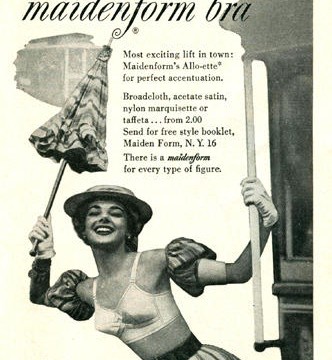If you’re curious, Seventeen magazine was first published in 1944—the year my mom was born and eight years before Seduction of the Innocent was published. Now, I’ve never seen a copy from that era, so I guess I theoretically could be wrong. But if there weren’t one or two articles—not merely ads but full articles—published in those eight years about how to lose weight, gain weight, or rearrange weight, I, for one, will be shocked. Because I know my teen magazines. Clearly—and say it with me, now—Wertham does not, as quickly becomes evident in chapter eight, “‘Bumps and Bulges’: Advertising in Comic Books.”
It’s frustrating, because this is another place where he’s not entirely wrong. I had a friend many years ago whose daughter was, at four, already being convinced by her paternal grandparents that she was fat. (She wasn’t.) There’s a lot of emphasis on appearance in our culture, and kids suffer for it. There’s a cosmic injustice to the fact that you first start seriously worrying about your appearance at a time when nature has ensured that it won’t be the best.
But you can’t blame comic books for that. I mean, the 1950s were the era of the bullet bra. Heck, you could open up perfectly ordinary magazines at the time and encounter the world’s most famous bra campaign. For twenty years, shirtless women were dreaming they did random things in their Maidenform bras. You name it, some woman was doing it in her bra.
My grandmother actually used to say that the problem was that she had the figure she did too late for Lillian Russell and too early for Jane Russell. It was hard to be a flapper with a large chest, though I’m sure my grandmother gave it her all. So one imagines that, if Wertham had been writing about the same sort of ads except twenty-five years earlier, he’d have been complaining about all the devices for flattening “problem bosoms” instead of the ones for increasing them.
Why am I spending this long talking about bras? Because Wertham spends some six pages talking about how comic book advertising influences girls’ opinions of their breasts. Oh, okay, there’s also some in there about body fat, about how girls are hit coming and going—ads were out there to encourage girls to put on weight if they were too skinny, too. Though those were more aimed at boys, encouraging them to put on muscle.
It seems, thought, that Wertham is completely unaware of the sheer scope of the industry built on making people feel insecure about their looks. He complains that “Advertising is, or could be—quite apart from its selling aspect—a wholly educational influence,” which is itself indicative that he’s missed the whole point of advertising. He complains about the quack cures being sold for acne and insists that it’s the fact that they’re in comic books that keep them from being investigated for making false claims and so forth, but I swear to you, I saw ads for essentially the same product in the teen magazines of my own adolescence twenty years ago, forty after he was writing.
It may be just me, but there’s something seriously unsettling about how long he lingers on the whole breast thing. He’d been married more than twenty-five years at that point, and I find myself wondering what his wife thought about the whole thing. Was he so unaware of her undergarments, or did she actually not own a girdle? A push-up bra? A merry widow? Any number of the items summed up in the term “foundation garment,” really.
Just in case you thought it was only comic books that tied sexuality and violence, Wertham has plenty of things to say about the weapons ads, too. Mysteriously, none of them are things like “Why is it legal to advertise weapons to children in the first place?” or “Why aren’t mail-order weapons dealers forced to ensure they aren’t selling to minors?” Or, really, much of anything that doesn’t pin the blame for the whole thing on comics.
Yes, he even talks about how many kids shoot their eyes out with BB guns. Which made me look up Red Ryder, actually; before he ever got a comic book, he’d appeared in newspaper comics, a radio show, and several theatrical release movies. And the BB gun is still in production, albeit probably more for nostalgia over A Christmas Story than anything else.

